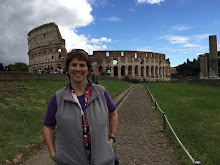Amanda Rosenbloom owns a small shop that sells vintage clothing in New York. On a routine call to an elderly woman to purchase some vintage clothing, she finds a diary sewn into a fur muff. And she quickly puts the diary in her purse and doesn't tell the woman she has it.
Amanda quickly dives into the diary, which starts in 1907 and belonged to a young woman named Olive Westcott. Newly arrived in Manhattan with her father, a manager of a Woolworth's store, Olive wants one thing: to be a buyer at a department store. She's a modern young lady in a time when women worked for pennies, hardly ever advanced in the work place, and couldn't even rent a hotel room by themselves.
As she reads the diary, Amanda finds her life mirroring Olive's in unlikely ways: both are alone in New York, both struggle to make a living doing what they love, and both struggle between wanting a career and questioning whether they want marriage and family. Amanda is having a long term affair with her married childhood sweetheart; it's full of broken promises and lots of broken dates. She's 39 and realizes she's wasted years on this man, and now her opportunity to have children may be over. What does she do? Does she have the courage to finally break it off for good?
And Olive--what a strong woman! She's faced tragedy, adversity, poverty, and the struggle to stay in New York. She may admit defeat and return home to marriage and family and a dull existence, but her desire to live her dream is overpowering and gives her the strength to face whatever comes her way.
You will quickly become caught up in Olive's life as Amanda reads her diary. You will love Olive! And you'll find out how her diary ends up in that fur muff. Amanda's life doesn't compare in drama like Olive's life. And Amanda's choices seem pretty obvious to me--ditch the affair and learn to be happy with yourself.
Olive and Amanda both face choices and have to muster the courage to leap into the unknown in order to find happiness and success. It is true that women today have many conveniences and rights women 100 years ago didn't have, but we still face some of the challenges and barriers they did--and there is still the question of career or family.
Rating: 7/10 Olive is a character that comes alive through her diary, and the glimpse into 1907 New York City is amazing. It does make you want to explore Old New York in books and photos.
Available in paperback and e-book.





